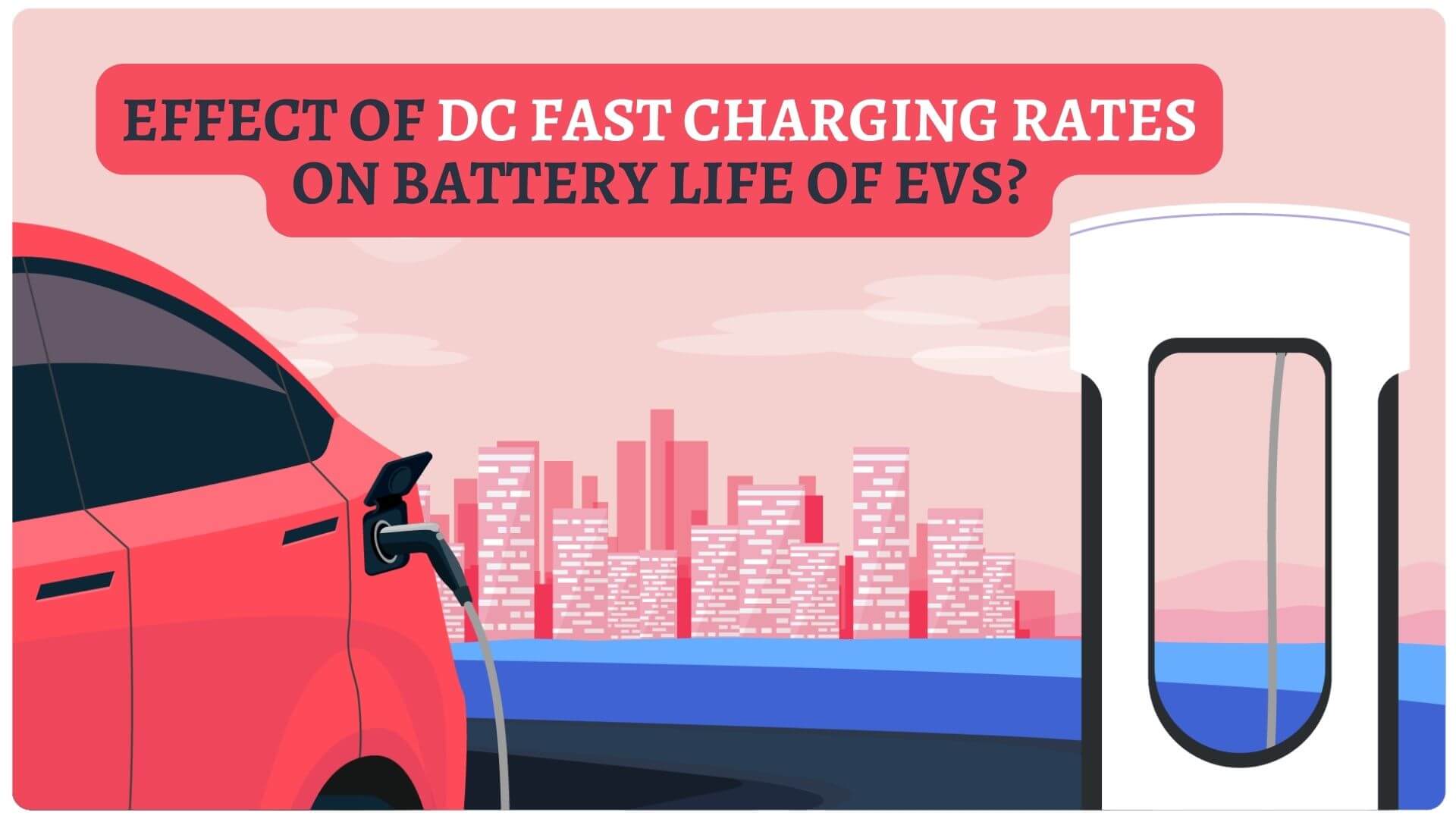
Effect of Fast Charging on EV Battery Life
Electric vehicles (EVs) are viewed as an essential way to cut global carbon emissions from the transportation sector, but there are a number of challenges to their widespread adoption.

Technical issues including battery range, charging time, and battery life are major among these, especially for battery-only EVs versus hybrid vehicles.
Longer battery size boosts EV range, and rapid charging infrastructure shortens charging times, but what impact do these factors have on the third worry of EV battery life?
With time and use, all batteries deteriorate. Most EVs come with an 8-year or 1,50,000-kilometer warranty, whichever comes first. If an EV battery no longer retains 80% of its useable capacity and has a self-discharge rate of more than 5% over a 24-hour period, it is deemed to be at the end of its life.
Charging and discharging patterns such as continually consuming the entire capacity of a battery or repetitive quick charging can cause accelerated battery degradation.
Battery Charging and Discharging Patterns
| C Rating | Time |
| 30C | 2 Mints |
| 20C | 3 Mints |
| 10C | 6 Mints |
| 5C | 12 Mints |
| 2C | 30 Mints |
| 1C | 1 Hour |
| 0.5C OR C/2 | 2 Hours |
| 0.2C OR C/5 | 5 Hours |
| 0.1C OR C/10 | 10 Hours |
| 0.05C OR C/20 | 20 Hours |
Charge (and discharge) patterns are measured in ‘C-rates’ per hour, with 1C-rate indicating that the battery will be fully charged or drained in 1 hour at that current level. The C-rate can be computed by dividing the charger’s power output by the battery capacity or size, ignoring conversion efficiency. The lower the C-rate for charging for a given charging power, the larger the battery capacity.
Battery life is also dependent upon the type or chemistry of the battery used in the EV, which can be Lithium Nickel Manganese Cobalt Oxide (NMC), Lithium Nickel Cobalt Aluminum Oxide (NCA), or Lithium Iron Phosphate (LFP).
Charging rates above 1C rate adversely affect the battery life whereas, for LFP batteries, the battery life is not significantly affected by charging rates up to 4C.
The electricity that comes into our households from the grid is Alternating Current (AC). Most modern electronics, including EVs, use Direct Current (DC) for their operation. During AC charging of EVs, current from the grid is converted into DC using the onboard inverter, whereas, in DC charging, the rapid or ultra-rapid charger converts AC into DC.
EV models with NMC & NCA Batteries have DC fast Charging C- rating limit
| EV model (market share of BEV) | Battery chemistry | Battery capacity or size (kWh) | AC4 Home charging (7 kW)
| AC4 Fast charging (22 kW)
| DC rapid (50 kW)
| DC ultra-rapid (150kW)
|
| Nissan Leaf (22%) | NMC | 40/62 | 0.11C | 0.11C | 0.79C | NA |
| Tesla Model 3 (17%) | NCA | 55 | 0.13C | 0.20C | 0.91C | 2.7C |
| BMW i3 (6%) | NCA | 42 | 0.17C | 0.26C | 1.17C | NA |
| Volkswagen e-Golf (5%) | NMC | 35.8 | 0.20C | 0.20C | 1.12C | NA |
| Renault ZOE (9%) | NMC | 55 | 0.13C | 0.40C | 0.84C | NA |
| Tesla Model S (7%) | NCA | 100 | 0.07C | 0.17C | 0.5C | 1.5C |
| Kia e-Niro (3%) | NMC | 42/67 | 0.08C | 0.11C | 0.75C | NA |
Table 2: EV models in the United States (because no such particular C – Rate data is available from TATA or MG in their user manuals.)
Table 2 demonstrates that NMC batteries have DC charging power constraints that prohibit the C-rate from exceeding 1C. Even without the power constraints imposed by battery management systems, none of these EVs come close to surpassing 1C while charging using fast chargers. Because of the power constraints, the exceedance is negligible for quick and ultra-rapid charging.
For rapid and ultra-rapid charging, the exceedance is minimal due to the power limits. Consider the Jaguar I-Pace: the additional degradation is limited to around 3% in 300 cycles when using ultra-rapid chargers.
When compared to home, fast, or quick charging in 300 cycles, such charging speeds can lower NMC battery life by up to 10%. As a result, while regular quick and ultra-rapid charging reduces battery life, the effect is negligible owing to battery management technologies.

Alternating Current (AC) is the type of power that is delivered to our homes via the grid (AC). Most modern devices, including EVs, operate on Direct Current (DC).
The onboard inverter turns grid current into DC during AC charging of EVs, whereas the quick or ultra-rapid charger converts grid current into DC during DC charging.






